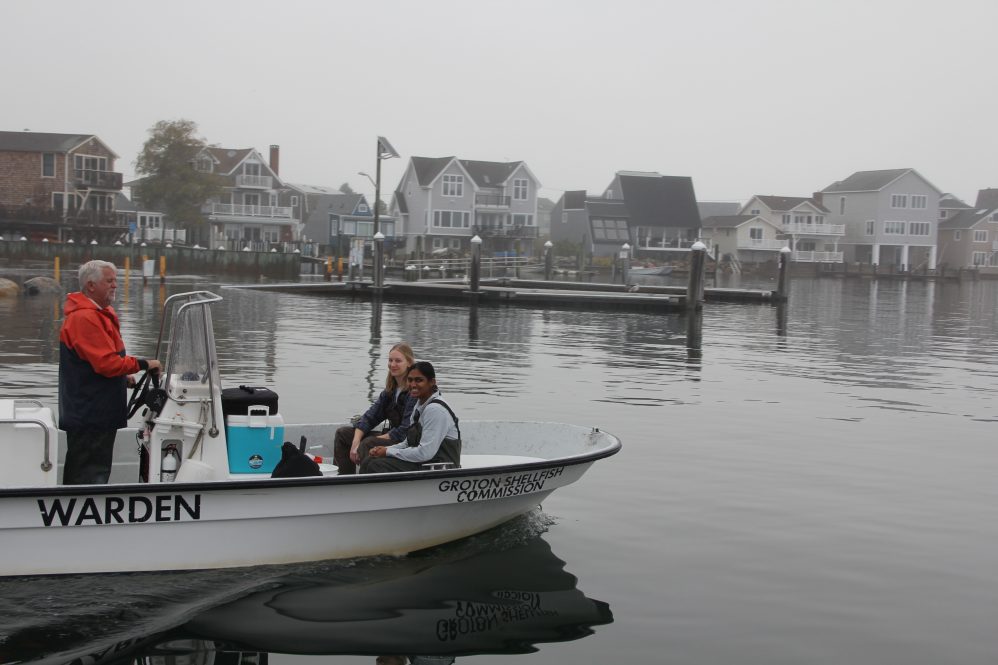UConn researchers are participating in a multistate project in which fish, shellfish, insect, water and sediment samples from urban coastal areas from the Chesapeake Bay to Northern New England will be analyzed for the presence of potentially harmful chemicals in four research projects commissioned by a partnership of the Connecticut, New Hampshire and North Carolina Sea Grant programs.
The awards will fund research in New Haven; Norfolk and Hampton, Virginia; Narragansett Bay, Rhode Island; and Lake Champlain in Vermont and New York that is part of the Contaminants of Emerging Concern (CECs) project begun by the three Sea Grant programs in 2021. National Sea Grant funding supports the CECs project and the research.
The Connecticut Sea Grant project will be led by Christopher Perkins, laboratory director in the Institute of the Environment’s Center for Environmental Sciences and Engineering. The project will study fish and shellfish from coastal areas associated with Tweed-New Haven Airport, areas that are a source of seed oysters for commercial shellfishing and which hosts a subsistence fishing community.
The four awards, ranging from $150,00 to $113,236 each, will focus on communities with environmental justice issues and industrial chemical residues posing the highest levels of concern among researchers, health experts and the public. This framework for the research call was informed by a national survey conducted by the CECs project. All four projects include outreach and education components relevant to the impacted communities and possible actions to limit exposure, for example, advising subsistence fishermen and their families to limit eating the most affected species.
CECs are a broad category of chemical residues from commonly used household and industrial products increasingly found in coastal and freshwater environments. Research thus far indicates these can be harmful to human and wildlife health, but much more analysis is needed to identify the most dangerous levels, cumulative impacts and the most effective mitigation strategies. While residues of medicines, cleaning products and fertilizers are among the CECs most commonly detected, chemicals known as PFAS (per- and poly-fluoroalkyl substances) have emerged as the most potentially problematic due to their persistence in the environment and tendency to bioaccumulate in fish and other marine animals. Three of the four projects will focus specifically on PFAS.
“Contaminants of Emerging Concern are by definition under-studied and not well regulated,” says Sylvain De Guise, director of Connecticut Sea Grant, principal investigator on the CEC project, and professor of pathobiology. “These studies will enhance our understanding of CECs and help protect environmental and human health, which are closely related.”
The Institute of the Environment (IoE), established in 2019, is an umbrella organization that acts to enhance synergy, collaboration, and cooperation across all facets of the University. Its mission is to catalyze and advance research, education, and engagement concerning the environment and sustainability, including interfaces with the arts and humanities; biophysical, engineering, and social sciences; law and policy; and health and agriculture.



